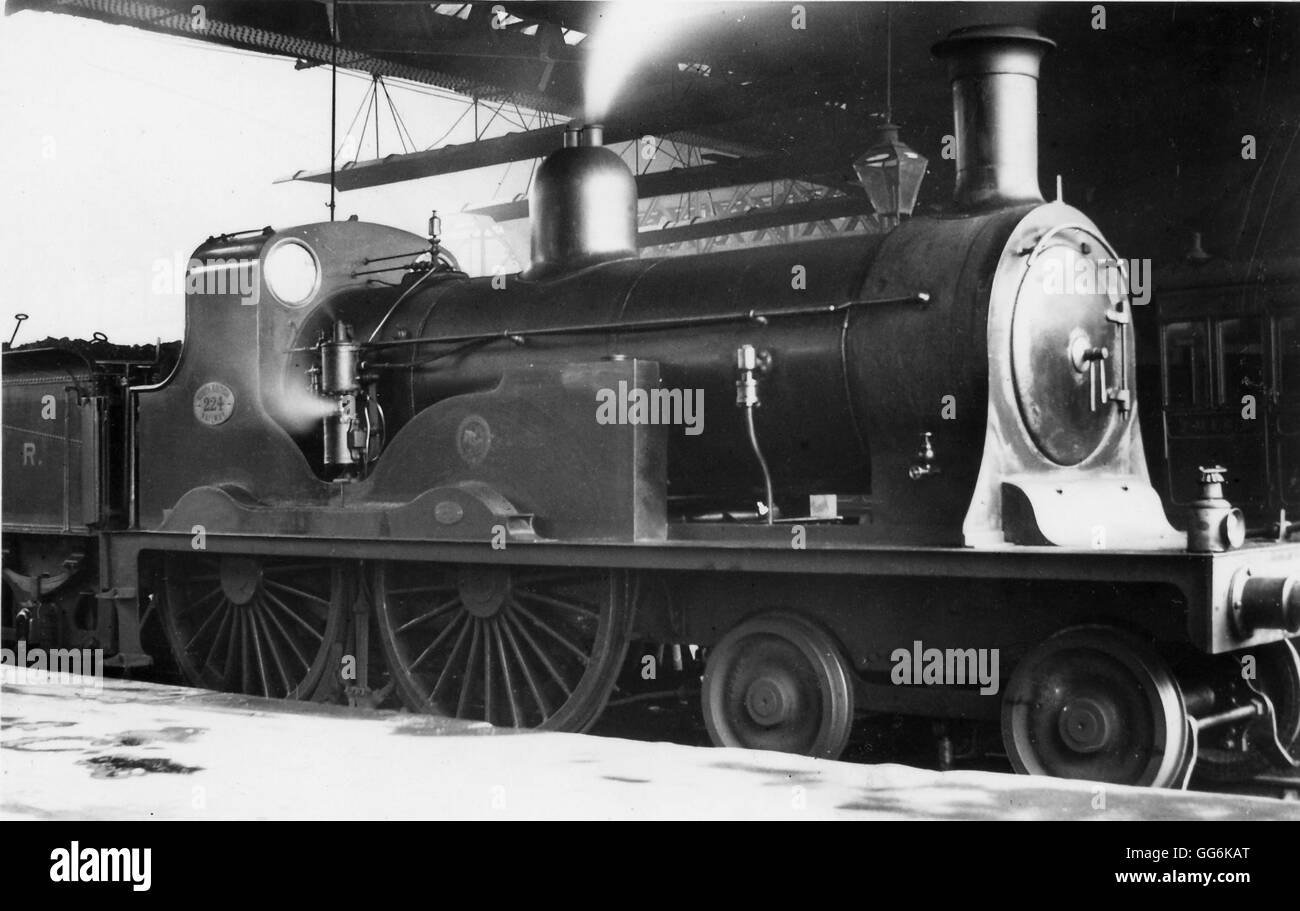NBR 4-4-0 No.224 "The Diver"

Image details
Contributor:
Niall Ferguson / Alamy Stock PhotoImage ID:
GG6KATFile size:
55.5 MB (956.9 KB Compressed download)Releases:
Model - no | Property - noDo I need a release?Dimensions:
5543 x 3502 px | 46.9 x 29.7 cm | 18.5 x 11.7 inches | 300dpiDate taken:
1890Location:
UnknownMore information:
This image could have imperfections as it’s either historical or reportage.
No. 224 was the first inside-frame inside-cylinder 4-4-0 in Great Britain, & predated the G&SWR 6 Class by some 2 years. This layout, the 4-4-0 with inside frames & inside cylinders, became widespread across most of Great Britain, with the Great Western Railway being the only main-line company which did not possess the type. There had been earlier 4-4-0 designs on other railways, but these either had outside cylinders (such as nos. 160 & 161 (built 1860) of the Stockton & Darlington Railway) or outside frames (such as the "Whitby Bogies" (1864–65) of the N E R). The 224 Class were used on express passenger trains, No. 224 was used in Fife, which before the construction of the Forth Bridge, was an isolated part of the NBR system On 28 December 1879, the regular engine for the 1.30 p.m. mail train from Dundee to Burntisland (no. 89 Ladybank of the 88 Class, an 0-4-2T) failed, & no. 224 (which was based at Dundee, & spare at the time) worked the train. It did so without incident on the southbound run, but when working the 5.20 p.m. northbound service later in the day, due to arrive at Dundee about 7.30, it was on the Tay Bridge when shortly after 7.13 p.m. the latter collapsed. The driver & fireman had no warning of the impending disaster, & neither closed the regulator nor applied the brakes; they were among the 75 persons killed. Despite the fall, the locomotive was relatively undamaged, being protected by the bridge girders which formed a cage around the train as they fell together In April 1880 the locomotive was recovered at the third attempt & stood on the bank of the Tay until sent to Cowlairs on its own wheels for repairs, after which it returned to traffic. It gained the nickname The Diver. After this, drivers refused to take no. 224 across the second Tay Bridge (opened in 1887). However, on the 29th anniversary of the disaster, 28 December 1908, no. 224 was used on the Sunday evening mail to Dundee via the Tay Bridge.